COMBAT'S A MOTHERFUCKER
Swimming in a Bomb Shelter and How the Immortal Richard Edson Put Me Back in the Chair.
“To survive a film, you must become a film.” - Unknown.
I’m staring at a mural of a surfer girl balancing a surfboard on her head. She’s facing the ocean. While blonde, she’s not the quintessential sunny California construct Brian Wilson, his brothers, neighbor, premature balding evil cousin, or The Wrecking Crew warned us about. Not by a long shot. And to avoid confusing your mental picture, she isn't some modern-day bong-hitting Malibu High casualty in an oversized chilaquiles-stained Sublime hoodie either. The woman I’m looking at, well, she’s the construct of some lowly corporate branding creative person assigned the soul-crushing task of making sure that the swimming pool that I am currently swimming in fifty feet underground does not resemble the George Romero Day of the Dead bunker that it is. By the nape of her neck and the width of her swimmer’s shoulders, I’d say she’s a fitness model standing in some digital photographer’s studio not far from the home hub office; the beach she’s looking at feels like clip art toggled for the maximum photoshopped perfect day filter. Her purpose is to reassure you, me, or whoever to “hang loose” before the doors open and those Romero zombies appear. And trust me, those roving Romero zombies can’t be reasoned with and are ready to put almost everyone in a world of shit unless they’re handed their marching orders by the business end of a MAC-10.
I’ve been swimming the 50-meter freestyle back and forth in this bunker for almost two years. This once-atomic fallout shelter, sub-basement vaults, and grand printing press complex of this former 1930s newspaper building were all absorbed and converted by a corporate gym chain at some point in the last decade. Having zero experience with gym membership apps, I warily joined to have round-the-clock access to a pool whenever needed, as I currently lack one and got tired of begging for favors from friends who do. I also did this in the final moments of the pandemic to reclaim some headspace and secure a better heart rate as I settle into my forties. Separately, as part of the health regimen, I took up a rigorous boxing and Mossad-developed fight training program with a disciple of the original Indiana Jones stuntman, but that's another story for another day. Maybe my second sight is getting me ready for something.
My bunker was empty and quiet. The long hallways with low ceilings and exposed plumbing lead into a large room that houses the swimming pool, which felt like a good place to think and regroup amidst the world's collective decision to take our masks off slowly but with some apprehension. More people started trickling back in, making it less appealing to me. And no matter how long she waits for the perfect set, the lonely surfer girl can’t make this feel like welcoming daylight in an underground room with reinforced cement walls. After all this back and forth through the heavy chlorine, I can’t help but think that I’m missing out on the natural light topside.
I met actor Richard Edson through my gallerists, Stephen and Jodi Ziegler, of These Days in L.A. “Edson,” as Stephen calls him, is probably best recognized for his co-leading role alongside John Lurie and Eszter Balint in Jim Jarmusch’s indie cinema high watermark Stranger Than Paradise. This film was a lighthouse beacon for me and the others cut from the same cloth of downbeat twenty-something chainsmokers. It is an exercise of correct moves, simplicity, fade downs, and a timeless style captured during the final seconds of that small era of New York life that I find most intriguing. It’s putting the zap on my brain that we’re even talking, much less watching my long-lost and found art school film Suburban Kid as it projects as an installation against the wall in the These Days’ small theater. Edson is a part of the generation who moved into New York City when most fled its rampant crime, blocks of abandoned buildings, and graffiti-covered subway cars - and, against the odds, made great art across the mediums flourish there.
“I always thought that if I died in an evil place, my soul wouldn’t make it to heaven.” Actor Zack Niizato delivers this dialogue onscreen as we continue talking.
* Richard Edson on the set of Platoon
I had kept tabs on Edson’s film performances ever since seeing his joyride in Cameron’s Dad’s Ferrari in Ferris Bueller’s Day Off in a Studio City multiplex as a kid, as I came to think about it, had lost track of him somewhere around Mike Figgis’ one-shot opus Timecode produced during the height of the Figgis phenomenon circa 2001. As we kept talking, I scrolled through the video store that is my brain, zeroing in on other performances. Visualizing Richard playing one of the key grunts of Oliver Stone’s Platoon, Vito from Sal’s in Spike Lee’s Do the Right Thing and William Walker’s slain Immortal in Alex Cox’s Nicaraguan epic Walker—hmmm…..helluva resume.
* Charlie Sheen on the set of Platoon by Richard Edson
“What has Richard Edson been up to?” I thought to myself, so I just asked him. And what I learned is something welcomed yet unexpected. Edson had started shooting black-and-white photos with his Olympus while acting in most of the films I just mentioned. Photography became essential to him, so much so that he dedicated himself to it. He’s released a stack of photography books; his most recent, Year Zero: Lockdown Journal, is Edson’s two-volume collection of images and diary, all captured during the L.A. lockdown. Quite remarkably, Edson didn’t hunker down and lock himself away like most of us. He was at the center of many demonstrations and riots here during that unrelenting 2020 into 2021 with his digital camera at the ready amidst exploring other contrasting waves of solitude that intersected his journey. In some ways, Edson’s path reminds me of pop artist James Gill, who dropped out of the scene in the early seventies to focus on other interests.
* Above - 3 photos from Richard Edson’s Year Zero: Lockdown Journal
Oh, and Richard Edson was also the original drummer of Sonic Youth.
After that, he played with NYC No-Wave dance band Konk, and he is currently in a Free Jazz combo, which came together because of the pandemic, putting on their shows entirely for themselves at Zebulon (and still are).
A few weeks later, he asked me to make a short film with him. Finally, a mission, I said, “Yes.”
Thanks partly to that great re-set moment responsible for Edson’s new book. I had been out of the director’s chair for a few years as I prepared new projects, wrote a novel, constructed poetry, painted, worked on film preservation, and shot rolls upon rolls of analog photos; it just seemed that the ambition fueling this next chapter of filmmaking had put directing on hold until the almighty and all-knowing green lighters wired the bread so that the boom mic could be lowered into the scene of my choosing.
I would find myself standing on a side street around the corner of Skid Row with Edson, helping Stu, my cinematographer, swap out the 50mm Leica for the 19mm, documenting Richard’s journey. This edgy area is the radius where much of this recent chapter of photos takes place, stretching into the Arts District and beyond Nick’s Cafe, where L.A.’s freight trains run like clockwork.
“My style is boom.” There’s a short pause. Then he says “Boom.” again. Edson demonstrates how inconspicuously he holds and clicks the shutter. The camera is cradled in his hand and maneuvered, usually from a lower position, with one eye on the screen. Within seconds, he’s moving again on his bike down the empty street, the camera wrapped around his wrist, searching for another subject. We follow him on foot past the closed storefronts and cardboard boxes littering the Toy District. If it weren’t for us, no one would have ever known he was ever there. Edson is a New Yorker through and through and can maneuver himself nimbly in the tougher areas and situations this concrete jungle presents, which is not unlike the one The Specials sang about.
* Joe Strummer with Nicaraguan villagers on the set of Walker by Richard Edson
I’m without a sound man or gaffer, and that director’s chair isn’t anywhere in sight. I’m wearing my trademark loafers, which are incorrect for this walk, and it’s muggy. There’s a comradely in creating, though, which makes it all work as we work. I am considering buying a pack of cigarettes and starting smoking again while I pick up a water bottle. It feels like the right thing to do when working with one of Ed Harris’ Immortals who slogged through the jungles of Nicaragua with Alex Cox, putting as many American production dollars in the people's pockets as they could to combat the political games of the U.S. in the 1980s. “Who needs the chair?” I think. My mind wanders back to the Romero health bunker for a split second as we begin filming in a deserted Mexican market, discussing Robert Frank’s 1950s photography and Miles Davis’ gone electric Jazz record Bitches Brew. A conversation in need of a Lucky Strike.
And as if I’ve been struck with a diamond between my eyes, I begin to see a correlation between the ideas of Free Jazz improvisation and how Edson takes these photos. From violent LAPD confrontations with rubber bullets fired at him and others, then finding himself dialing it back to something as quiet as a hanging piñata in an empty market.
Something’s to be learned from this, and it’s good to make a film about it.
Year Zero: Lockdown Journal is Available Online Here or at Arcana & Skylight Books in L.A. for brick-and-mortar enthusiasts.
Look into www.richardedsonphoto.com & pickup Sonic Youth’s first record.
Excerpt from Jack Hirschman’s poem about artist James Gill entitled Nekked;
“Jesus Christ Jimmy
what blue licks
in the eroding night tenderly
stripping away the golden fan
fare of the outside
red meat of the inner flame
leaving these rages at tailend
soft where
even the thungs of travesty are upheld
light in Decembers
punished strokes of victory
in the Great Year of our Great Defeat”
Photos by Nick Ebeling and Richard Edson ( is noted with *)
Referenced Music - Sonic Youth’s Sonic Youth, The Specials’ Concrete Jungle, Miles Davis’ Bitches Brew
Special thanks, Danny Reams, for the last minute of last minutes & Lee Renaldo for the clipping.





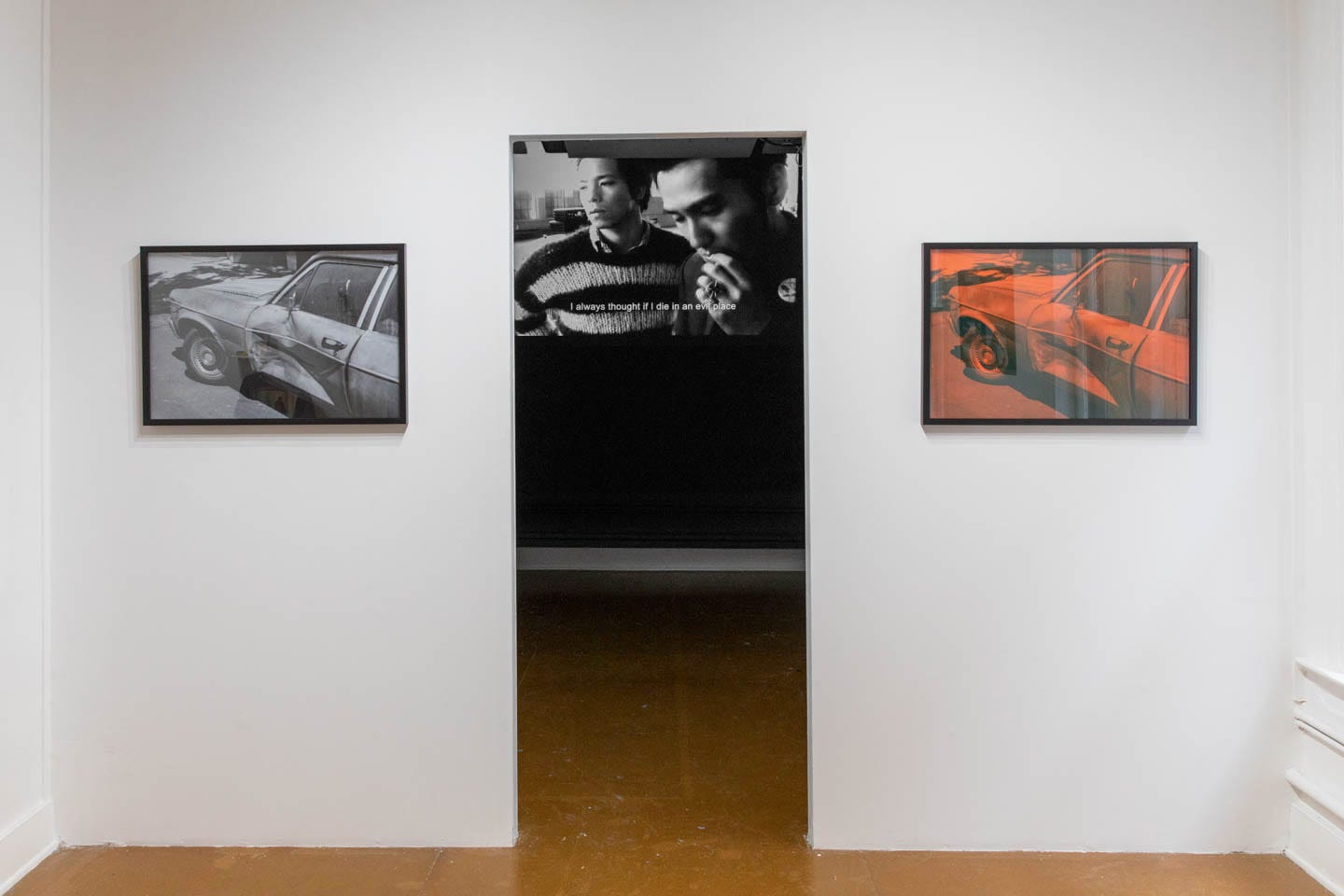
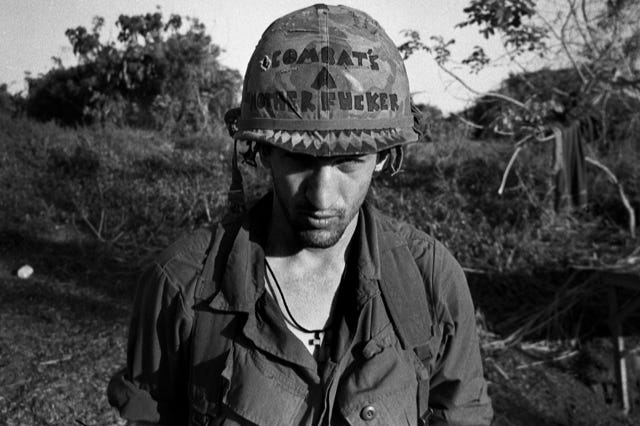


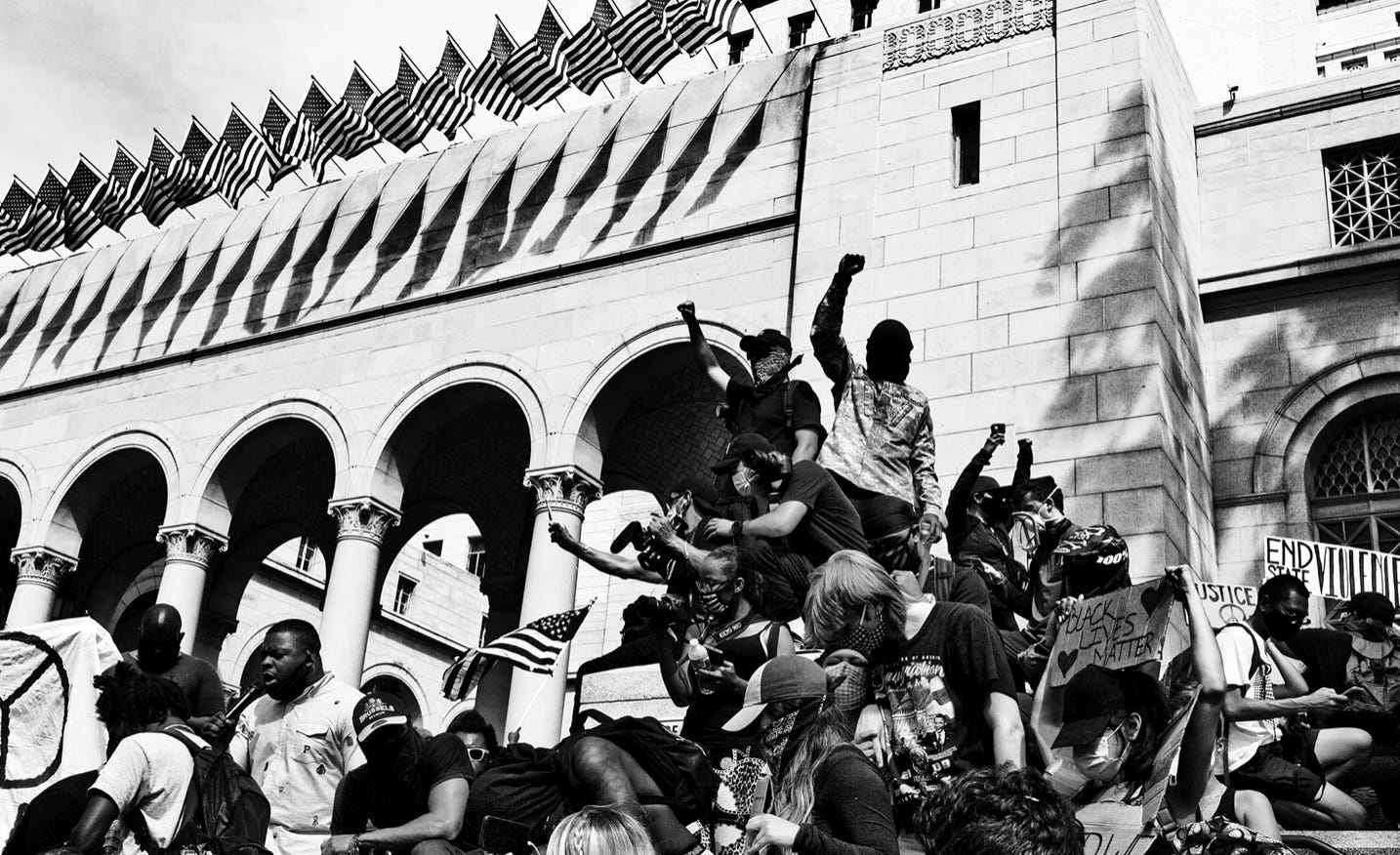

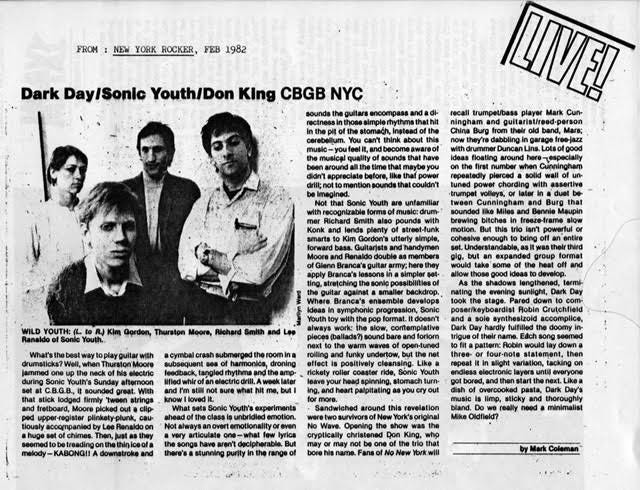
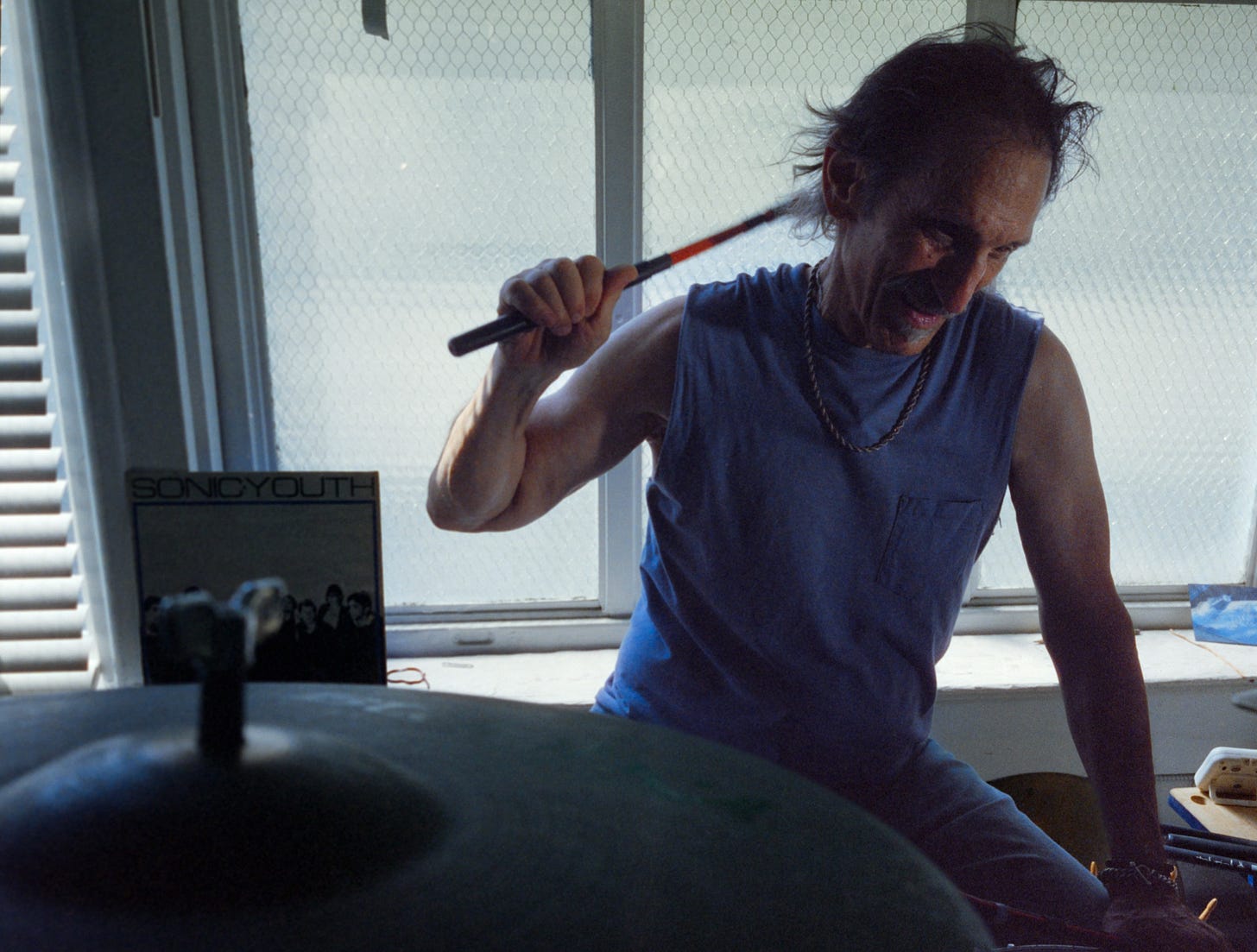
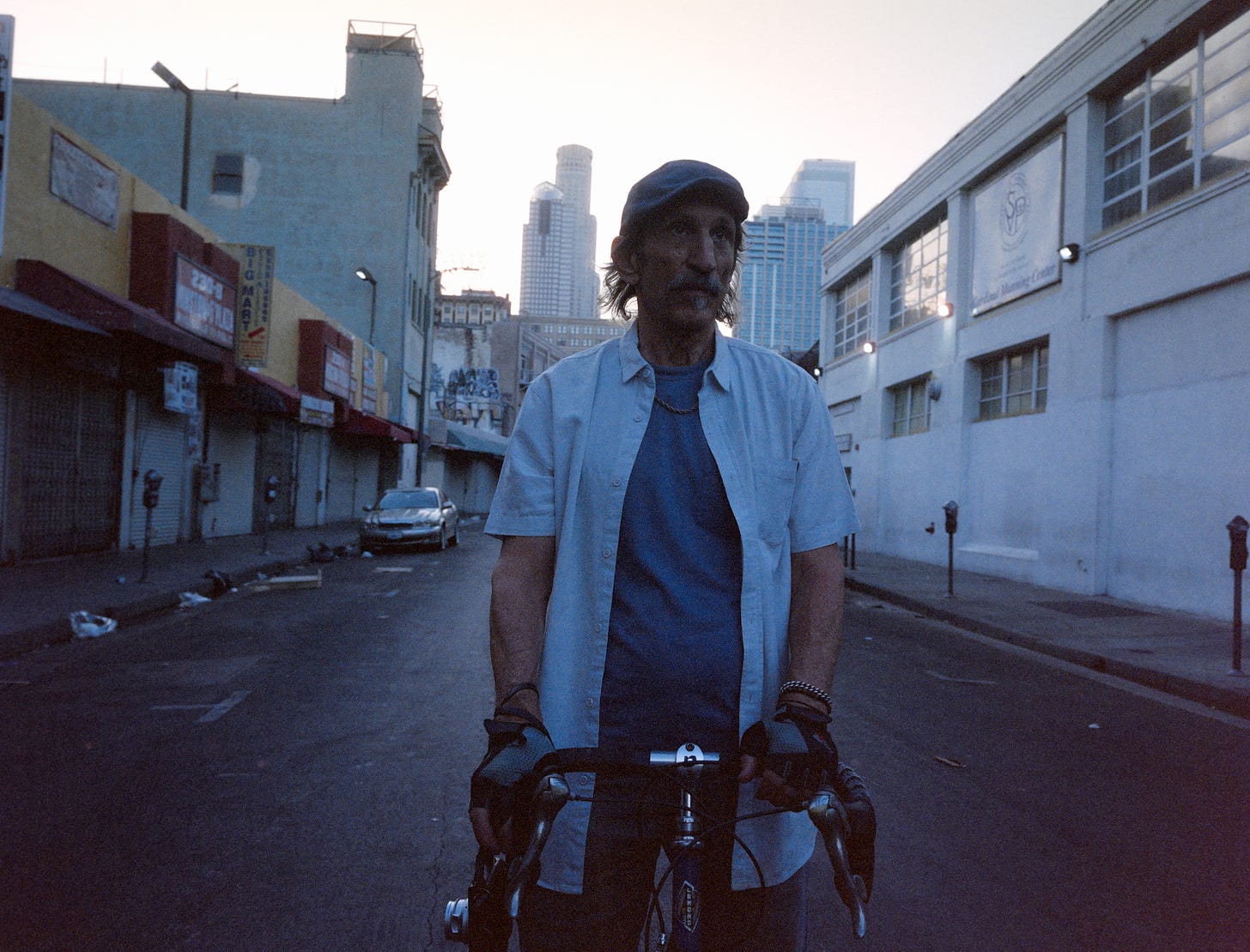

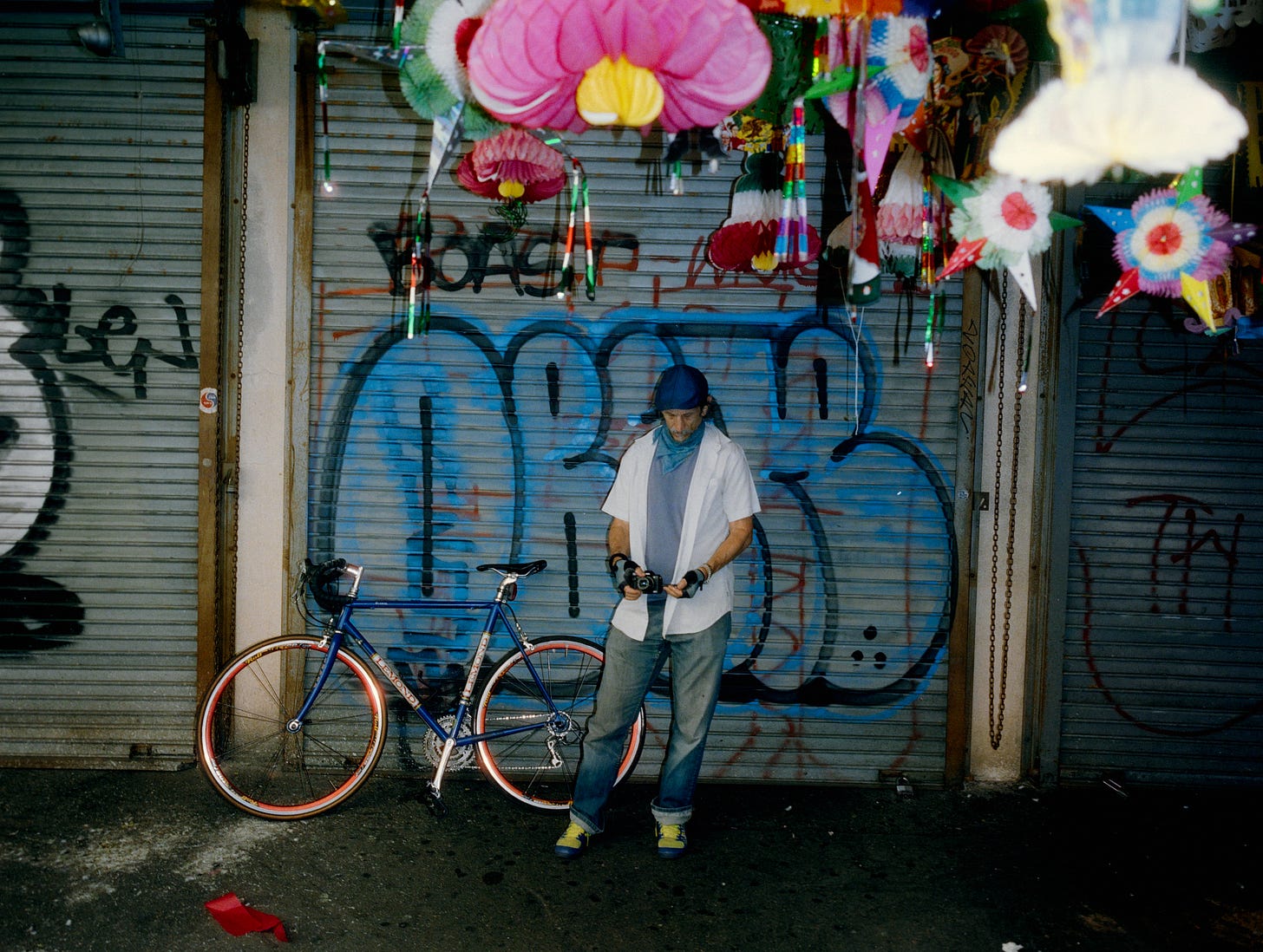
Edson's photos are fantastic, as is the photograph of him on the bike , great use of monochromatic blues/greys.